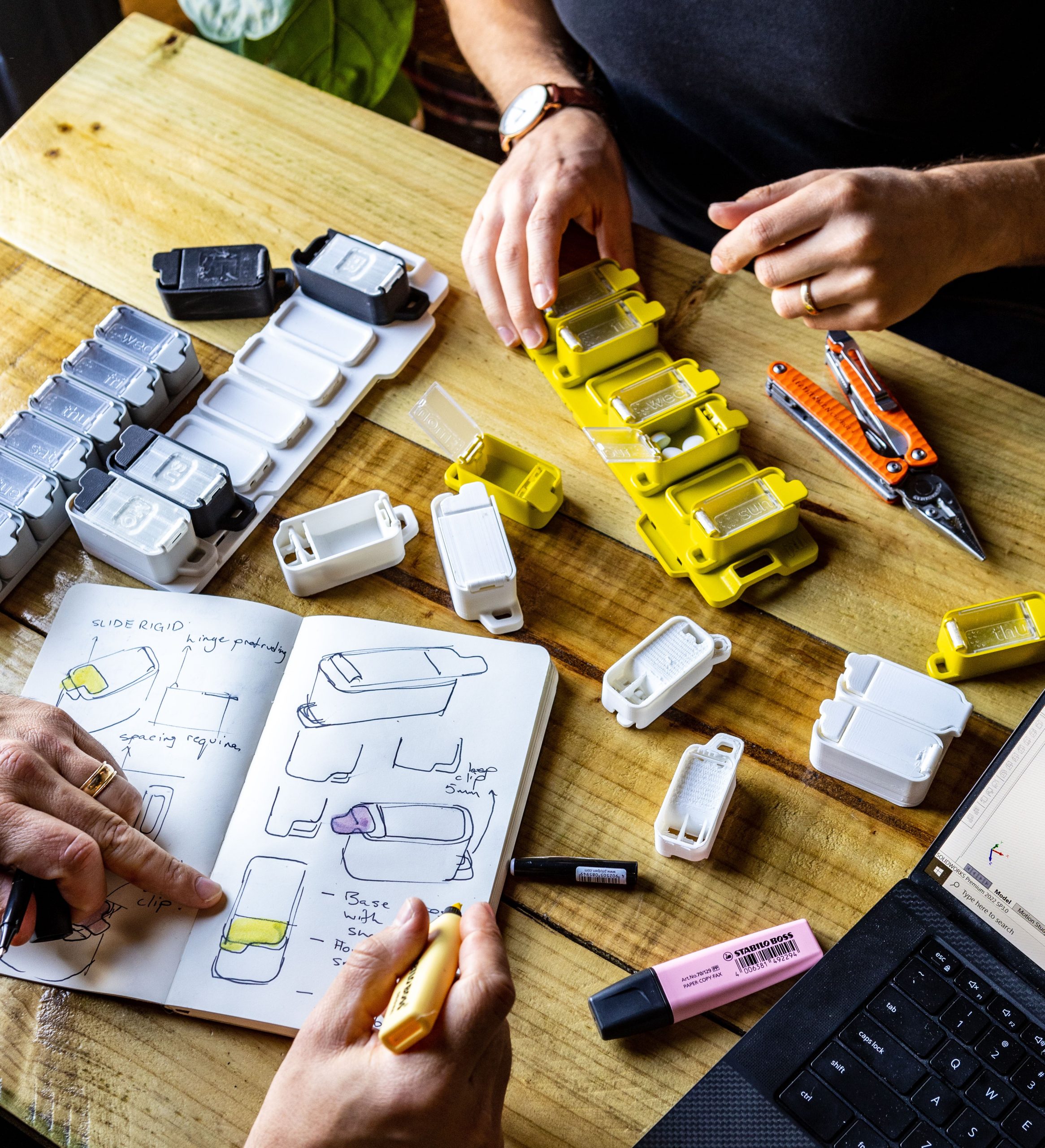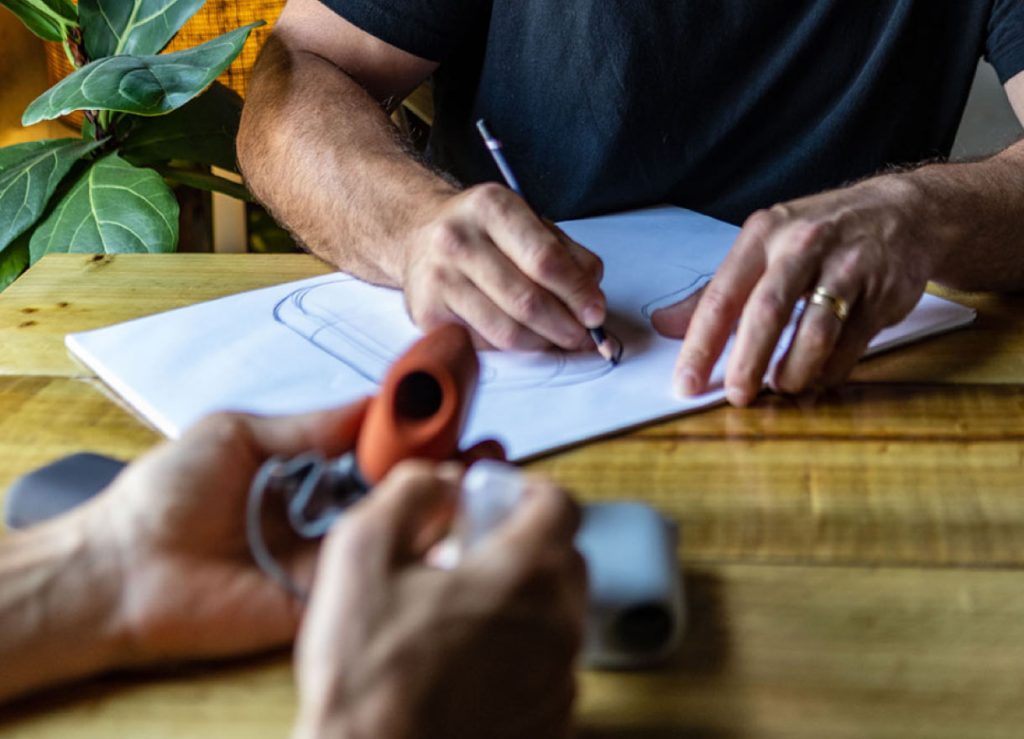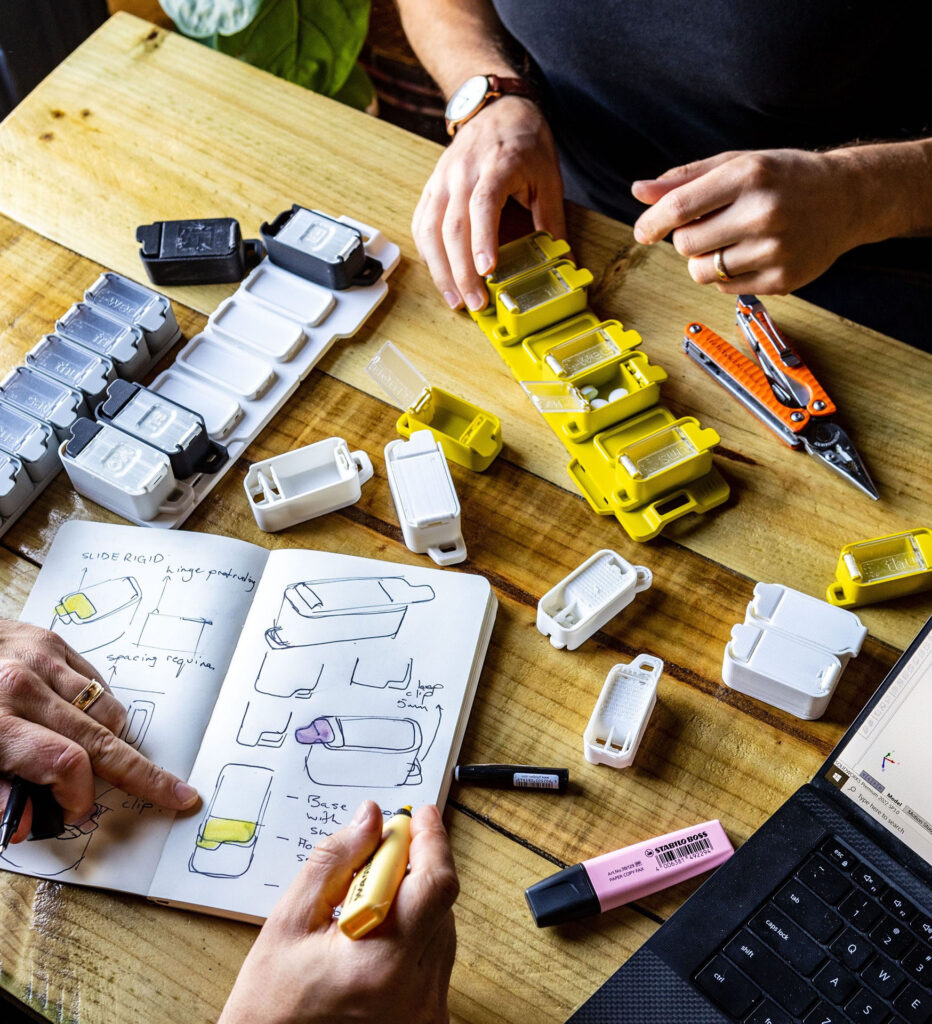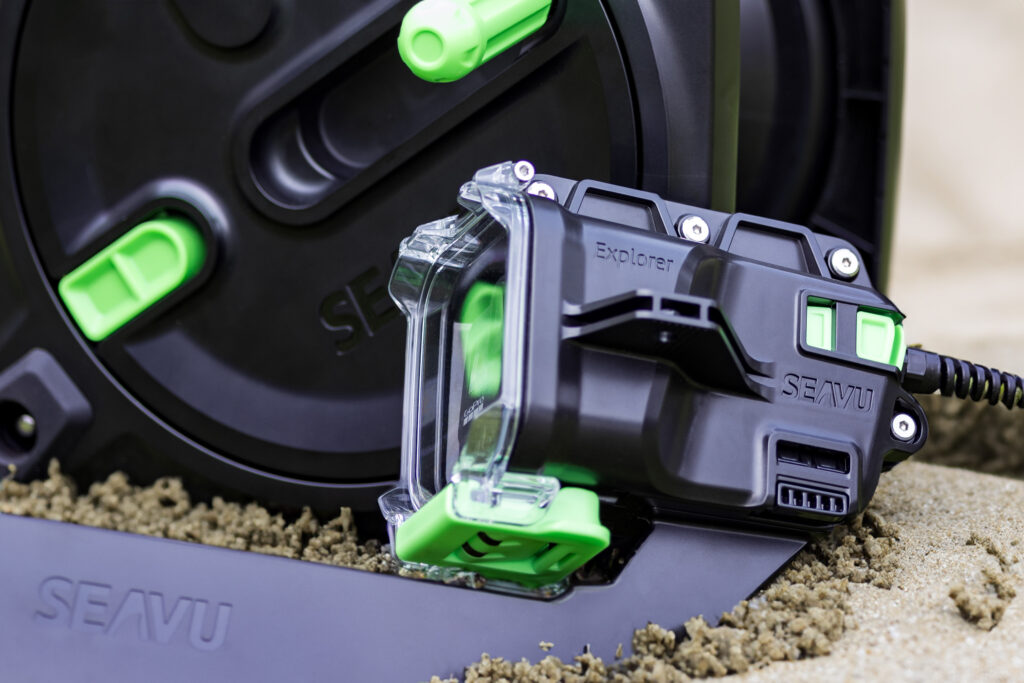
03 Sep A designer’s guide to the product development process

Creating a migraine-free new product development process
Creating a product from scratch is one of the most challenging—and rewarding—journeys you can take. It’s not just about having a great idea; it’s about knowing how to transform that idea into something tangible, functional, and market-ready.
At Paraform, I’ve seen firsthand how varied this new product development procedure can be. Some projects start with a spark of inspiration and evolve through trial and error, while others follow a carefully planned roadmap. Regardless of the path, one thing stays the same: you need structure, creativity, and strong collaboration.
I want to talk about designing a new product development strategy. I want to take you through the stages of the new product development process by breaking it into steps that’ll help you avoid blind spots, tackle challenges, and keep your idea on track. Along the way, I’ll share practical advice and tools we use to help clients bring their concepts to life.

It all starts with a spark of the imagination
Every product journey begins with a concept. This is where ideas are nurtured and refined, transforming from abstract thoughts into tangible solutions. It’s the most creative stage, but it also demands rigorous thought to ensure the idea has the potential to succeed.
Finding inspiration and creating innovative product ideas
Every great product solves a problem. Think about the pain points you notice in everyday life—those inefficiencies or frustrations that need solving. That’s often the best place to start. Tools like journey mapping or brainstorming sessions with a mix of perspectives can help you uncover these opportunities.
But innovation doesn’t always mean reinventing the wheel. Some of the most impactful ideas come from combining existing concepts in new ways. For example, modular furniture combines traditional home goods with the flexibility of modern living demands. At Paraform, we focus on product concept development, helping clients take familiar ideas and elevate them with innovative twists.
Refining your idea through concept development
Once you’ve got an idea, the next step is refining it through concept development. This involves answering key questions:
- Does this product solve a real problem?
- Is it aligned with user needs and values?
- How will it stand out in the market?
For instance, one client came to us with a concept for sustainable consumer electronics. By conducting a manufacturability review, we identified recyclable materials and simplified assembly methods, ensuring the design was scalable and eco-friendly.
This stage transforms the idea from “what could be” to “what will be.” It’s about scrutinising every detail, from how people will interact with the product to whether it’s feasible to manufacture at scale.
The design and prototyping phase
Laying the groundwork with product design
This is where your concept starts to take shape. The transition from idea to design is all about making your vision tangible. Using tools like 3D product design, we can visualise and refine every detail before moving forward.
It’s also crucial to consider usability at this stage. User interface prototyping helps ensure that your design isn’t just visually appealing but also intuitive and functional.
Why prototype testing is essential
Product prototyping is where your idea really comes to life. By creating physical or digital models, you can test and refine the concept before committing to full-scale production. It’s not just about making sure the product works—it’s about discovering flaws, improving usability, and ensuring the design aligns with your vision.
For example, we once worked with a client developing modular home appliances. Using CNC rapid prototyping, they were able to test multiple configurations quickly. The insights gained during this phase saved them significant time and money in the long run.
Engineering and manufacturability
Even the most innovative design won’t succeed if it’s impossible to manufacture. That’s why it’s critical to align your design with manufacturing realities early in the process.
Through services like mechanical product design and materials design analysis, you can bridge the gap between concept and production. For example, one client faced challenges with a foldable electronic device. By conducting a manufacturability review, we simplified the hinge mechanism, making it easier to produce while retaining durability.

Testing and validation ensure your product delivers
The value of product validation testing
Testing is where you prove your product performs as promised. It’s about reducing risks, meeting regulations, and ensuring reliability. We offer product validation testing to help uncover and fix issues before your product reaches the market.
The iterative loop: Test, learn, refine
Testing isn’t a one-and-done process—it’s an iterative cycle. By refining prototypes based on feedback, you can ensure the final product not only works but exceeds user expectations.
Collaboration is, as always, the key to success
The power of teamwork in product development
Collaboration is essential to the success of any product. It ensures alignment between designers, engineers, and manufacturers so nothing gets lost in translation. Our product design project management services help facilitate this teamwork, ensuring that every step of the process benefits from diverse expertise.
Business analysis and market alignment
Understanding market trends and user demographics is just as important as the design itself. Business analysis helps you align your vision with real-world opportunities, informing decisions about pricing, distribution, and scaling.

Final thoughts
Bringing a concept to life is so much more than following a checklist. It’s a balancing act between creativity and practicality, vision and strategy. It’s about shaping an idea with care, testing it against real-world challenges, and refining it until it’s something you’re proud to put your name on.
What excites me most about this process isn’t just the end result—it’s the journey. Every hurdle overcome, every adjustment made, and every collaboration formed is a testament to the power of thoughtful design. The products we create don’t just solve problems; they carry the stories of their creators, the trust of their users, and the promise of something better.
At Paraform, we believe every concept deserves the chance to shine. Whether you’re at the spark of an idea or deep in the trenches of refinement, we’re here to guide you through the process, step by step. Let’s turn your vision into something tangible, impactful, and extraordinary. Together, we can design the future—one product at a time.



